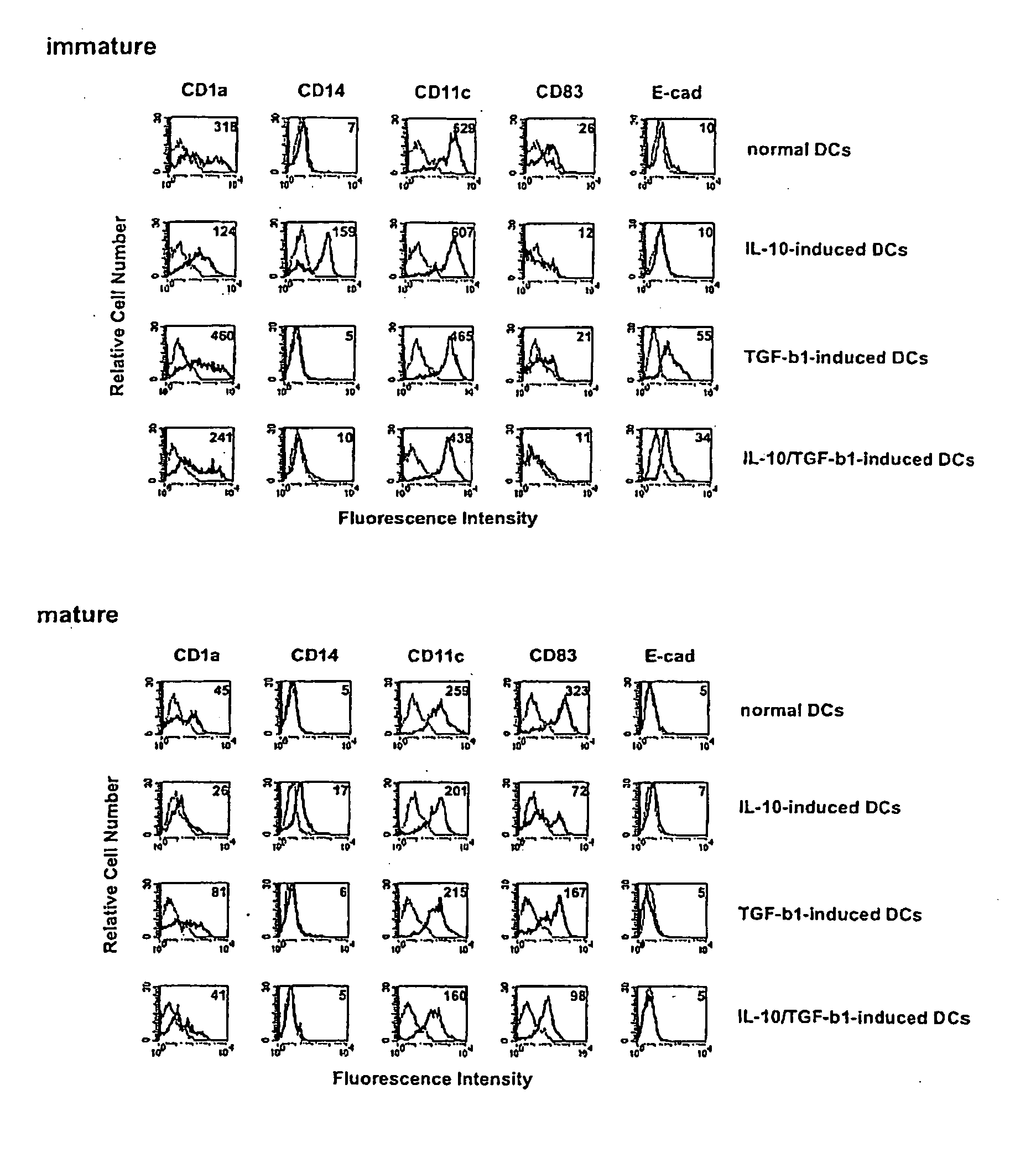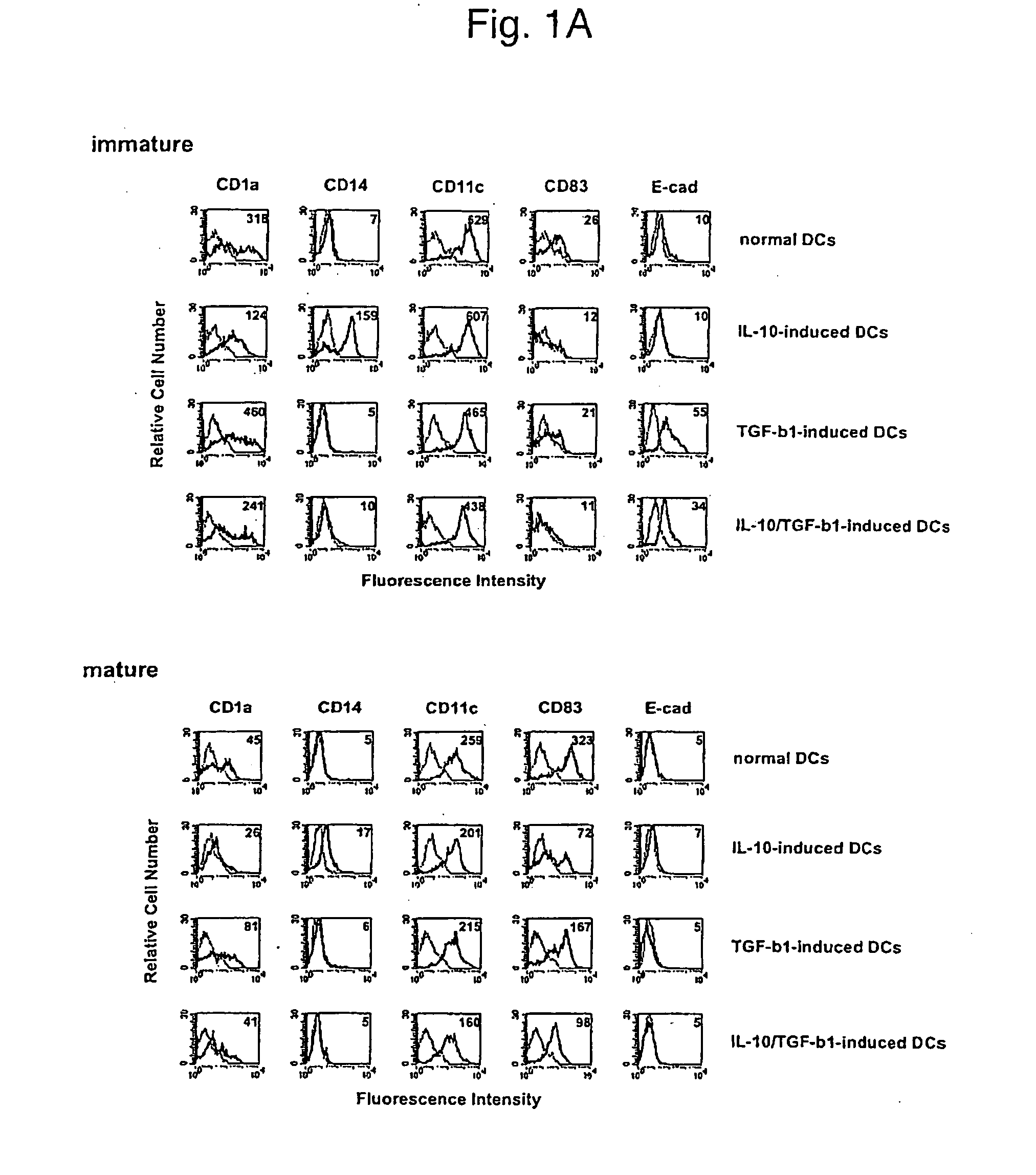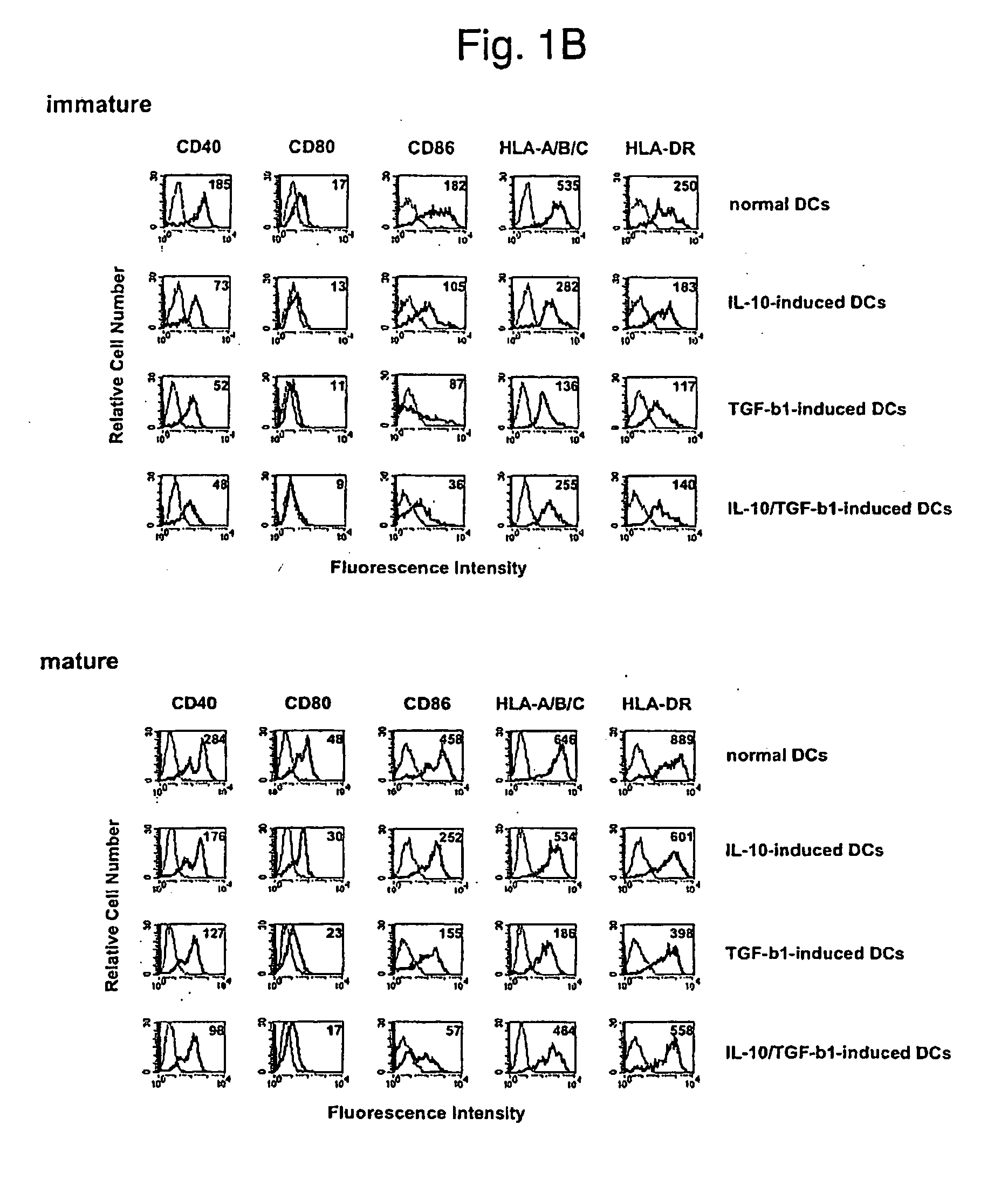Method of preparing immuno-regulatory dendritic cells and the use thereof
- Summary
- Abstract
- Description
- Claims
- Application Information
AI Technical Summary
Benefits of technology
Problems solved by technology
Method used
Image
Examples
example 1
Phenotypes of modified human DCs
[0123] Human DCs were prepared in the following manner. Human peripheral blood-derived mononuclear cells were allowed to adhere to a dish for cell culture (Becton Dickinson) for 2 hours, and monocytes were obtained as adherent cells (>90% CD14+ cells). These monocytes were cultured in the presence of human GM-CSF (50 ng / ml, PeproTech) and human IL-4 (50 ng / ml, PeproTech) for 7 days, nonadherent cells were recovered, and negative selection was carried out using an anti-CD2 monoclonal antibody (Dynal) and an anti-CD19 monoclonal antibody (Dynal) to which magnetic beads had been coupled to remove contaminating T cells, NK cells, and B cells. Cells remaining after the removal were determined to be immature normal DCs. Similarly, modified human DCs were prepared by culturing monocytes with human IL-10 (50 ng / ml, PeproTech) alone (IL-10-induced DC), human TGF-β1 (50 ng / ml, PeproTech) alone (TGF-β1-induced DC), or human IL-10 (50 ng / ml, PeproTech) in combin...
example 2
Among Modified Human DCs. IL-10 / TGF-β1-Induced DCs Function as Immunoregulatory DCs to Induce Anitgen-Specific Anergy to T Cells and Suppress Reactivation of Actived T Cells
[0124] Whether or not modified DCs would induce anergy to allogeneic CD4+ T cells was examined. T cells were isolated from human peripheral blood using a negative selection kit (Dynal), and naive CD4+ T cells (105 cells), which had been isolated as CD8·CD45RO·cells using an anti-CD8 antibody and an anti-CD45RO antibody (BD PharMingen), were cultured with allogeneic DCs or allogeneic modified DCs (103 to 104 cells) for 5 days to conduct cell growth assay. In another experiment, naive CD4+ T cells (5×106 cells) were cultured with X-ray (15 Gy)-irradiated allogeneic DCs or allogeneic modified DCs (4×104 to 5×105 cells) for 3 days, and negative selection was carried out using an anti-CD11c antibody and a magnetic-beads-coupled goat anti-mouse IgG antibody to recover CD4+ cells. The recovered CD4+ cells (105 cells) w...
example 3
Human Immunoregulatory DCs Inudce CD4+ CD25+ Immunoregulatory T Cells
[0125] Human naive CD4+ T cells (5×106 cells) isolated in a manner equivalent to that of Example 2 were cultured together with allogeneic DCs or allogeneic immunoregulatory DCs (5×105 cells) for 5 days. The obtained T cells were analyzed for cell surface antigens and intracellular cytokines using FACS. Intracellular cytokine production was analyzed in the following manner. Cells were stimulated with an anti-human CD3 antibody immobilized on a plate (10 μg / ml, BD PharMingen) and with a solubilized anti-human CD28 antibody (10 μg / ml, BD PharMingen) for 6 hours. The resulting cells were permeated, immobilized, and then stained with anti-human IL-2, IL-4, IL-10, and interferon (IFN)-γ (BD PharMingen) for analysis using FACS. The results represent one typical data set attained in 5 separate experiments. When allogeneic normal DCs were used, CD4+ CD25+ cells and CD4+ CD154+ cells were induced. In contrast, CD4+ CD25+ ce...
PUM
 Login to View More
Login to View More Abstract
Description
Claims
Application Information
 Login to View More
Login to View More - R&D
- Intellectual Property
- Life Sciences
- Materials
- Tech Scout
- Unparalleled Data Quality
- Higher Quality Content
- 60% Fewer Hallucinations
Browse by: Latest US Patents, China's latest patents, Technical Efficacy Thesaurus, Application Domain, Technology Topic, Popular Technical Reports.
© 2025 PatSnap. All rights reserved.Legal|Privacy policy|Modern Slavery Act Transparency Statement|Sitemap|About US| Contact US: help@patsnap.com



